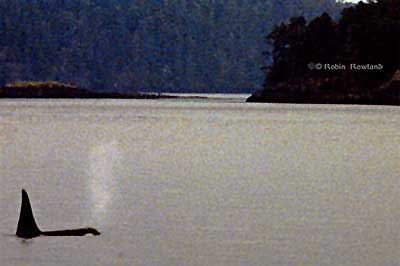
The worldwide population of Orcas probably crashed during the last Ice Age, creating a “bottleneck” in the genetic diversity of the species around the world, a problem that could continue to affect killer whales today, according to a new genetic study published on February 4,2014.
Rus Hoelzel from the School of Biological and Biomedical Sciences, at Durham University, in the UK and colleagues used DNA sequencing from archive material from earlier studies, or from museum specimens to track the evolution of the Orcas.
One group of Orcas that lives off South Africa are an exception, with greater genetic diversity than others, the new study has revealed.
“Killer whales have a broad world-wide distribution, rivaling that of humans. At the same time, they have very low levels of genetic diversity,” Hoelzel said.
“Our data suggest that a severe reduction in population size during the coldest period of the last ice age could help explain this low diversity, and that it could have been an event affecting populations around the world.
The Orca population along the Northwest Pacific Coast has the same low genetic diversity as in other areas, the study showed.
The killer whale is as a top predator, feeding on everything from seals to sharks. That means from the top of the food chain, the Orca also serves as a sentinel species for past and future ocean ecosystems and environmental change.
In the study published in the journal Molecular Biology and Evolution, Hoelzel and his colleagues assembled 2.23 gigabytes of Northern Hemisphere killer whale genomic data and mitochondrial DNA (mtDNA) from 616 samples worldwide.
The scientists concluded that killer whales were stable in population size during most of the Pleistocene (2.5 million – 11,000 years ago) followed by a rapid decline and bottleneck during the last great period of the Ice Age (110,000-12,000 years ago).
“Our data supports the idea of a population bottleneck affecting killer whales over a wide geographic range and leading to the loss of diversity,” Hoelzel said. “The South African population stands out as an exception, which may be due to local conditions that were productive and stable over the last million years or so.”
They are pointing to the “Benguela upwelling” ocean system which delivers nutrient rich cold water to the oceans off South Africa. The Benguela system remained stable despite the last glacial period and the nutrient rich water would have been able to sustain the supplies of fish and dolphins that killer whales in this part of the world feed on.
The scientists believe that other major upwelling systems around the world – the California current off North America; Humboldt off South America; and the Canary current off the coast of North Africa – were either disrupted or collapsed altogether during the last glacial or Pleistocene periods. This could potentially have reduced the food supply to killer whales in these areas, leading to the fall in their numbers.
While it was likely that other factors affecting killer whale populations were “overlapping and complex”, the scientists ruled out hunting as an effect on the bottleneck in populations. Hunting by early man could not have happened on a sufficient enough scale to promote the global decline in killer whale numbers.
In an e-mail to Northwest Coast Energy News, Hoelzel said that the team sequenced the DNA from a male killer whale from the Southeast Alaska resident community. “This genome revealed the same pattern of historical population dynamics as we found for a whale from the North Atlantic, suggesting shared history across a very broad geographic range, and a shared population bottleneck around the time of the last glacial maximum,” Hoelzel said.
The scientists say looking at the genetic diversity of the ocean’s other top predators, such as sharks, might potentially suggest a negative impact on their numbers too during the Ice Age.